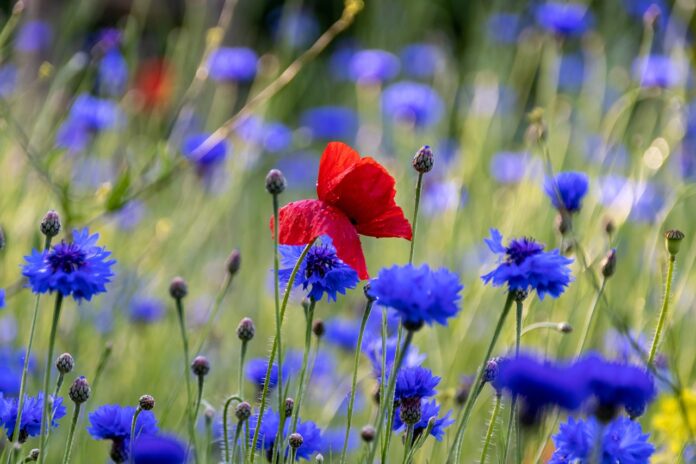There is an ancient legend about unrequited love. It tells of a mermaid who became infatuated with a simple country lad named Vasily. The underwater dweller did everything she could to charm the young man, even promising to make him the king of the river. But he preferred life on land and the work of a farmer, rejecting all her offers. Enraged, the mermaid turned Vasily into a blue flower, which is still called a cornflower in his honor.
Botanists lean towards a more straightforward explanation for the plant’s origin. They believe that seeds arrived from Central Asia along with the sowing materials for cereal crops. This is why delicate clusters of cornflowers are often found in fields of rye, wheat, and oats.
Most species of cornflowers are considered weeds. Only a few, mostly hybrids, are cultivated and grown in flowerbeds and garden plots.
Interesting Facts About Cornflowers
- This flower has many names: bachelor’s buttons, blueheads, confusion, bellflower, beggar’s flower, and others.
- The color spectrum of the petals of this wild plant is not limited to shades of blue and purple. In nature, you can find white, yellow, orange, and other colors.
- Cornflower leaves can be used as a meat seasoning. Additionally, they are an excellent preservative, so some homemakers add them to jars of cucumbers, tomatoes, and other preserves when preparing winter pickles.
- Cornflowers are used in the production of medicinal and cosmetic products. According to an ancient Greek myth, the centaur Chiron healed fatal wounds with cornflower juice.
- Easter eggs can be dyed turquoise using the flower, at least according to the novel by I. Shmelev.
- Breathing in the smoke of burned cornflowers can trigger a panic attack.
- In Ancient Egypt, blue cornflowers were considered the flowers of pharaohs and were revered as a symbol of fertility. A wreath of cornflowers was found in the tomb of the young Tutankhamun, indicating the value of this plant to the inhabitants of the Nile.
- The blue cornflower is a symbol of Estonia, as these charming flowers grow abundantly throughout the country.
- According to folk beliefs, cornflowers help remove curses and protect against evil spirits. This is why they are often woven into girls’ wreaths and also dried and hung in small linen bags near the entrance to homes.
- Historical Use: Cornflowers were used in medieval times for their supposed medicinal properties. They were often brewed into teas believed to help with eye ailments and digestive issues.
Cornflowers are highly valued by florists because their delicate appearance belies their durability; they can last 4-5 days when cut. In the language of flowers, cornflowers mean: “I dare not speak to you about my feelings, but I hope for reciprocity.” They are often given to a girl as a sign of affection or used as one of the elements in a bride’s bouquet to symbolize tenderness and grace.
